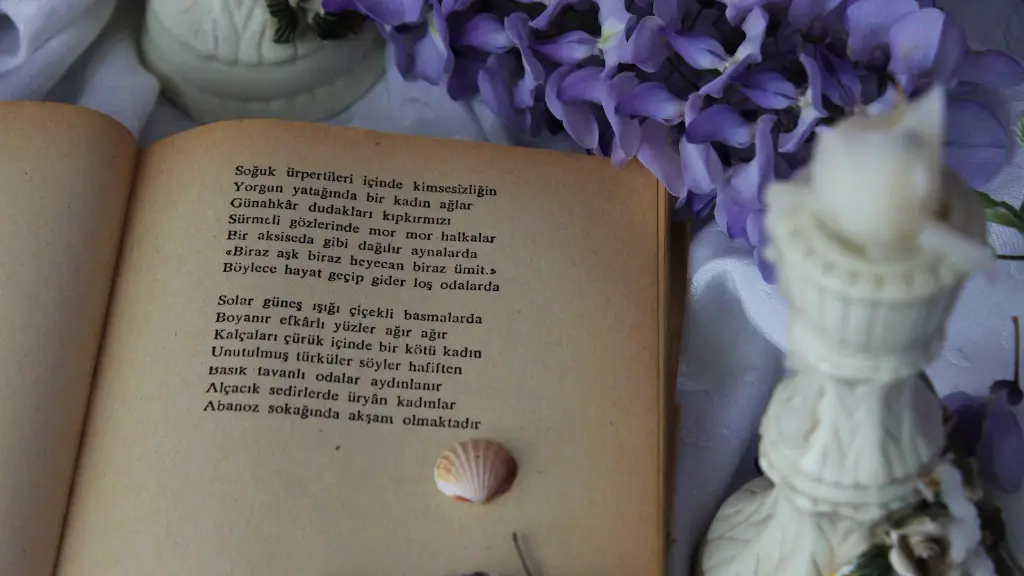History of the Limerick
Limericks are often incorrectly attributed as originating in England but the truth is that their true origin is much harder to identify. While many sources will point to Ireland, there is no record of the type of limericks that we know today in any Irish literature before the late 18th century. This has led some to believe that limericks were actually invented in England, perhaps as a result of British and Irish travellers blending languages and poetry styles.
The most commonly accepted history of the limerick dates back to the 1700s and traces its roots to English folklore. In particular, a collection called Lore of the Harp, which was a compilation of old Celtic tales, includes two limericks which were written in the dialect of the Irish language. These limericks were likely the first of their kind, and the style of poem quickly caught on in popular literature, eventually becoming the humorous and light-hearted form of poetry that it is today.
Structure of a Limerick
At its most basic, a limerick is a five-line poem with a specific rhyme structure and meter. The rhyme structure follows AABBA, meaning that the first and second line both have a rhyme, as do the fourth and fifth lines, and the third line is distinct from the rest and is unrhymed.
In terms of meter, each line of a limerick follows an unstressed, stressed pattern. That is, three syllables are unstressed, followed by one syllable which is stressed. This is repeated throughout the poem, and usually is comprised of words that have been deliberately chosen to not only fit the rhyme scheme but also emphasise a particular emotion or sentiment.
Limericks in Poetry
Limericks are considered light verse, and as such are often used to provide a humorous contrast in more serious pieces of poetry. They are also used as stand-alone pieces of light-hearted entertainment, allowing the poet to be creative and explore more humorous and whimsical topics.
Any subject matter can be used in a limerick, and this often is a popular choice for those beginning in poetry, as they are relatively easy to write and can be used to test different ideas without the pressure of creating a full poem.
Limericks are also often seen in spoken word poetry, where it is used as a comic or humorous break from heavier topics to entertain the audience and provide a break for the poet.
Examples of Limericks
Some well known examples of limericks are:
“There was a young man from Japan
Who’s limbs were exceedingly tan
He’d climb on the trees
And sleep in the breeze
And spend every day doing a jig on the sand”
“There was an old man from Peru
Who dreamt he was eating his shoe
He awoke in surprise
With a twinkle in his eye
And said, ‘That would make a pleasant stew”
Uses of Limericks
Limericks are commonly used as a form of entertainment in a variety of contexts, from poetry readings and pre-schoolers sharing silly stories to people simply pass time.
Their use in pre-schools has been especially popular; obtaining a group of young children to focus on poetry often proves to be hard, as poetry is generally considered to be a choice for older readers. Limericks, however, provide the perfect way to introduce young children to the art of writing poetry, as the structure can be easily recognised and the rhyming schemes are often familiar to them.
Limericks are also commonly seen in English-based comedy, as they provide a humorous contrast in otherwise serious conversations. Furthermore, they are often used as comedic relief as they are often light-hearted, silly and often contain some sort of moral.
Conclusion
Limericks are a particular type of light poetry in the English language, most commonly consisting of five lines of rhyming verse. Though the exact origin of the limerick is unknown, most sources point to the 1700s and British or Irish folklore as its birthplace.
Limericks are often used as a comedic contrast in literature, spoken word or even comedy and entertainment, and can be easily used as an introduction to poetry as the structure is straightforward and the rhyme schemes are usually quite familiar.
Style Advice for Writing a Limerick
Writing a limerick is a great skill to have, but it does take some practice. Here are a few tips and tricks that can improve your limerick writing:
1.Focus on clarity. When you begin the task of writing a limerick, the best thing to do is keep the message of the poem clear. This will help you to stick to one topic and create punchlines that stand out.
2. Practice alliteration. Alliteration is a great tool when writing a limerick. Alliteration involves repeating the same letter or sound at the start of each word, which can give the reader an extra boost of fun.
3. Follow the rhyme scheme. The rhyme scheme for a limerick is AABBA, meaning that the first and second lines rhyme with each other, as does the fourth and fifth lines. The third line does not have to rhyme with any other line.
Writing Topics for Limericks
Writing a limerick can be challenging; coming up with a topic or subject can be overwhelming at first. Here are some ideas for topics that lend themselves well to limericks:
1.Fairy tales. fairy tales provide some of the most iconic and recognisable phrases and imagery that can be used to create a limerick.
2.Animal stories. Animals often can provide humour, allowing you to create an amusing story and focus on something much different to typical limericks.
3. Historical events. Writing a limerick that focuses on an event in history can provide an insight into how an event impacted society at the time.
Limerick vs Other Forms of Poetry
Limericks differ significantly from other forms of poetry; they are generally seen as light verse and often used as comic relief. This is due to their five-line structure, rhyme scheme and syllable stresses used throughout the poem.
In comparison, haiku poetry is a Japanese form of poetry, composed of three lines consisting of five, seven and five syllable stresses respectively. This form of poetry allows for the poet to explore more contemplative thoughts due to its structured minimalist approach.
Limericks, on the other hand, allow for a much more humorous and playful tone, due to their rhyming schemes and often poetic imagery. This makes them an excellent choice for those wanting to have a bit of fun with their writing.


